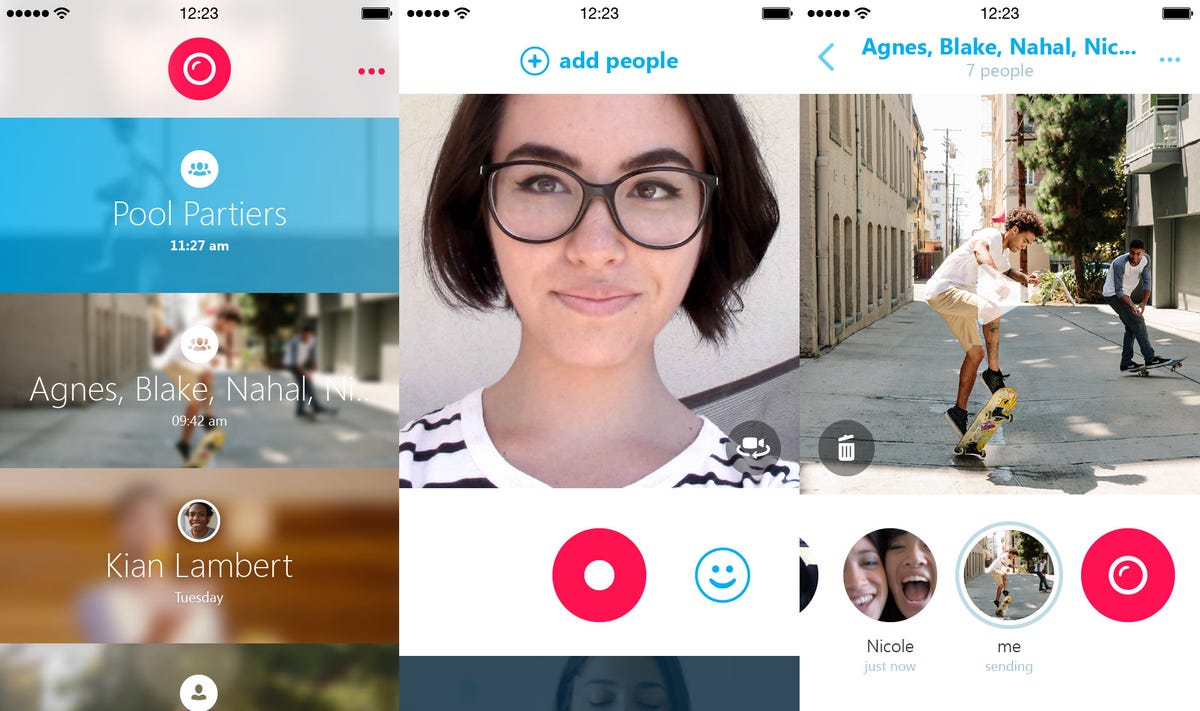
Skype
Skype on Tuesday launched a new app called Skype Qik that lets people send each other 42-second videos, a move the Microsoft division hopes will extend its communications clout from PCs to smartphones.
“Skype Qik is a lightweight, spontaneous, mobile-first video messaging app,” said Piero Sierra, director at mobile for Skype, in an interview. It’s a companion app to Skype’s video and audio conferencing software, which with more than 300 million users is a strong force already in online communications.
The mobile-only Skype Qik app an important move for Microsoft, a company whose fortunes are tightly wedded to the personal computer but which is trying to tap into the mobile market where there’s more growth. The Skype service has made the jump to mobile phones, but it’s used infrequently. That’s in strong contrast to competing products like Apple Facetime, Google Hangouts, Facebook Messenger, and countless text-messaging apps geared for frequent, quick missives.
More than half of new Skype users join with its mobile apps, but Skype wants a better showing in the mobile market. “It’s a desktop service that migrated into mobile, so it’s been challenging,” Sierra said.
You’ll likely recognize some Skype Qik features from other apps. People sign up for the service with their phone numbers, not usernames and passwords, an approach used by messaging apps such as Facebook’s WhatsApp and Rakuten’s Viber. The messages vanish after two weeks, a nod to the “ephemeral” design of Snapchat. The videos are limited in length, like Twitter’s Vine, though they’re seven times longer. And the videos are square, an aspect ratio familiar to anyone who spends time with the Instagram photo-sharing service.
Microsoft’s Skype division is making a big deal of the app. It released Skype Qik in 21 languages for Apple’s iOS, Google’s Android, and Microsoft’s Windows Phone.
The typical Skype video call today lasts 40 minutes on average but takes place infrequently, Sierra said. Skype Qik is designed to involve people much more frequently but in short bursts, he said.
“Skype calls in reality are something you do every two or three weeks,” Sierra said. “What do we do between those times?” Skype Qik, he hopes.


Skype
Skype Qik works for two individuals communicating and also for larger groups. Its main interface is a list of recent chat contacts. Tapping one of them reveals the conversational history and a big button to add a new video message.
The videos last two weeks and then are deleted from every phone involved in the chat, he said.
“It’s meant to be casual and spontaneous, not to last forever,” Sierra said.
A single start-stop button offers simple video recording, but people can choose from up to a dozen prerecorded messages if they want to use stock replies or are in a place like a family meal or noisy concert where they can’t record a new message.
The new app takes its name, and some of its programming team, from Skype’s 2011 acquisition of video app maker Qik, Sierra said.
The app is designed to send very small videos — less than 5MB, the size of a big JPEG image, he said — to save on storage space and battery usage. People can switch from front-facing to rear-facing cameras midway through the video if desired, and the app crops the video to its square shape as it records so processor-intensive editing isn’t required later.
Using people’s phone numbers and in-phone address books speeds the spread of the app, Sierra said, because users don’t have to go through a slow username and password signup process. Instead, the app sends text messages to recipients, prompting them to install the app. That approach made it important to release the app worldwide for three major mobile operating systems, Sierra said.
“It’s a viral group messaging app,” he said. “Imagine you have a group of 10 friends and one can’t join because he or she has the wrong phone.”
But there’s a downside to the approach: people can’t use the app on tablets, PCs, or other devices lacking a phone number. That means people using the app can’t seamlessly move to a different device the way Facebook Messenger, Apple Facetime, and Google Hangouts users can.
That likely won’t be the situation forever, though. Skype is working to link its traditional Skype service tightly with people’s phone numbers, a move that eventually could bridge the gap between Skype and Skype Qik.
“Skype is moving to embrace the phone graph,” Sierra said. “In the glorious future, you can imagine things meshed together.”
Updated at 10:07 pm PT to correct that Vine is a division of Twitter.




